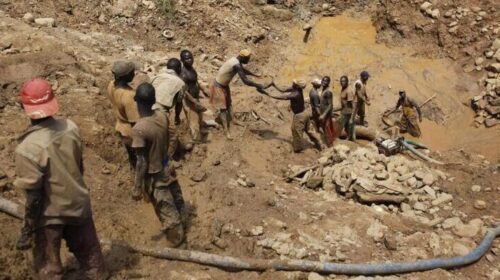African Copper Powerhouses Set to Meet Growing Global Copper Demand
The leading copper producers globally in 2023 were Chile, Peru, the DRC, China, and the United States, together accounting for 59% of worldwide output, or around 21.5 million tonnes.
Amid economic recovery and market speculation, copper prices surged, hitting about $10,000 per ton. Investment banks, like Goldman Sachs, anticipate further price increases due to persistent supply deficits expected from 2024.
Africa, particularly the DRC and Zambia, is also emerging as a significant player in copper production, with the potential to fill the growing supply gap projected to reach 10 million metric tons by 2030.
According to data from the U.S. Geological Survey, the top five largest copper producers in 2023 were Chile, Peru, the DRC, China, and the United States, in that order.
Collectively, those nations produced about 59% of the global copper production, or approximately 21.5 million tonnes. Here’s the full list.
Copper Price Surging Amid Tightening Supply and Speculation
Recently, copper traded about $10,000 a ton with investment banks, such as Goldman Sachs, to warn of intensifying supply stress of the commodity. Goldman raised its year-end price target for copper to $12,000 a ton from $10,000.
“We continue to forecast a shift into open-ended and mounting metal deficits from 2024 onwards,” the bank’s analysts, including Nicholas Snowdon, wrote in a note.
Already in 2024, copper is up 16% amid signs of economic recovery, and flashes of supply tightness of the raw copper materials shipped to smelters.
Speculation has a role in the price uptick. Speculators are placing bets that its critical role in emerging technologies will make it significantly more valuable in the future than it is today.
Copper miners have received little investment and there are too few mines under development which adds to their conviction of a constrained supply. Speculators buy copper futures which impacts current prices directly, and also indirectly by helping to shape investor and trader sentiment.
It takes decades for a large-scale copper mine to produce from site identification.
Some experts anticipate an 11.1 times demand increase in copper by 2050. EV adoption is a main driver of the optimism as they can contain more than a mile of copper wiring, each. Demand for copper to expand the global electricity grid could increase by 4.8 times in the same period.
Africa’s Copper Potential
African countries have rapidly increased copper production, especially the Democratic Republic of Congo which had a nascent copper production number in the 1990s to becoming the third-largest copper producer today.
By 2030, the copper supply gap is projected to approach 10 million metric tons as highlighted in numerous reports from McKinsey and The Oregon Group.
The top 8 copper producing countries in Africa, ranked by production, were the DRC, Zambia, Morocco, South Africa, Eritrea, Mauritania, Zimbabwe, and Namibia.
The DRC produced 2.5 million tons, and Zambia 800,000 tons. From there, production figures drop dramatically with the third largest producer in Africa, Morocco, only producing 36,000 metric tons.
Africa accounted for around 21% of global production worldwide.
Africa’s production could be ramped up significantly. Africa, particularly the DRC and Zambia hold some of the world’s largest and highest-grade copper deposits.
Investments are being made to improve extraction in Africa. An example is Ivanhoe Mines’ Kamoa-Kakula project which reached 2.5 million metric tons of production in 2023. Ivanhoe has allocated more than $1 billion of investment capital for this project.
The Lobito Corridor extends from the Atlantic port of Lobito through the DRC and Zambia’s copper-rich regions. This vital route for the shipment of copper being expanded means more copper can be brought to the port for export quicker and cheaper.

SOURCE:lobitocorridor.org
![]()





